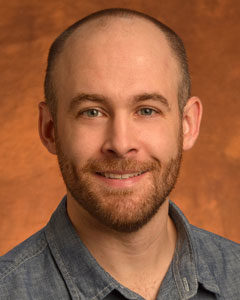
Associate Professor Andy Sarles
A team of researchers from the University of Tennessee, the University of Texas at Austin, Penn State University, Fudan University, and the University of Illinois at Urbana-Champaign has discovered a new method of water filtration that could have implications for a variety of technologies, such as desalination, breathable and protective fabrics, and carbon capture in gas separations.
The study, funded by the National Science Foundation, was inspired by the way plant and animal cells preferentially transport water across cellular boundaries and reject other small molecules such as dissolved salts.
Initially, the team aimed to develop artificial channels that selectively transport water in the same way as “aquaporins,” membrane proteins that are essential in many cells, including in the kidneys, eyes, and brain.
Things didn’t go as planned. Yet the team, led by Professor Manish Kumar in the Cockrell School of Engineering at UT Austin, discovered a new, more-effective synthetic water filtration process.
Kumar’s research group synthesized artificial water channels (AWCs) that didn’t work well alone, unlike aquaporin, which functions independently. However, when the AWCs group together in the membrane, they form collective networks of “water wires,” through which connected chains of water molecules, but not dissolved salts, can move exceptionally fast.
Andy Sarles, co-author of the study and associate professor in the Department of Mechanical, Aerospace, and Biomedical Engineering at the University of Tennessee, and his team helped characterize the salt rejection capability of the AWCs using his lab’s model membrane platform.
Former Undergraduate Research Assistant Megan Pitz (currently a PhD student in bioengineering at Clemson) and former Postdoctoral Researcher Joseph Najem (currently an assistant professor of mechanical engineering at Penn State) were key players in this work; they used electrical measurements to confirm the inability for dissolved salts to pass through the AWCs.
“The artificial water channels developed by Manish’s team are a very exciting and important discovery,” Sarles said. “For perspective: revealing how aquaporins work was only recently discovered in the early 1990s, and it eventually led to Peter Agre’s Nobel Prize in Chemistry in 2003. Because of how efficiently aquaporins pass water and reject other small molecules, they are the gold-standard for judging desalination technologies, which come nowhere close to matching their performance and efficiency.
“The fact that Manish’s biologically-inspired molecules are similar, but use a fundamentally different nanoscale architecture for shuttling water, is compelling motivation for engineered approaches to imitate biology. Plus, with >1000X better selectivity than commercial desalination membranes, their findings forecast significant potential for improving desalination efficiency and cost.”
The work was published this week in the prestigious journal Nature Nanotechnology.